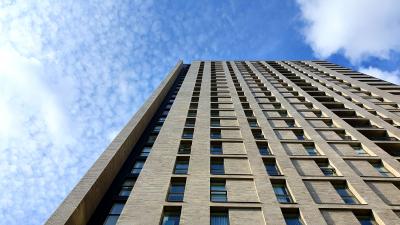Extra-statutory guidance and its role in relation to the Building Safety scandal - Part 2: Leaseholder Consequences
Guest author Liam Spender is a Solicitor-Advocate and Senior Associate at Velitor Law. Personally affected by the cladding controversy as a leaseholder, Liam practises in commercial litigation and arbitration in the City of London. The views in this blogpost are personal and not the views of Velitor Law.
Part 2: Consequences of the Advice Notes for leaseholders
Posted:
Time to read:
Overview
The first part of this blogpost explains how Advice Notes have been issued post-Grenfell; this part looks at further fire safety guidance and the consequences of this and the Advice Notes for leaseholders.
Waking Watch guidance
The Building Regulations require that apartment buildings are constructed with compartmentation to prevent the spread of smoke and flame from one part to another. On this critical assumption, a default position has been adopted that residents in apartment buildings should ‘stay put’ in the event of fire unless directed to leave by the fire and rescue service. Even before Grenfell, the risks of stay put had been exposed in the Lakanal House fire.

Photo by Denny Müller on Unsplash
On 2 October 2017, the National Fire Chiefs’ Council (“NFCC”) issued guidance on changing from a policy of stay put to one of simultaneous evacuation, or everyone out at the first sign of fire, in blocks where “there is a significant failing in the general fire precautions”. This guidance was prompted by the speed at which the façade fire at Grenfell had spread over the external walls and penetrated the interior of the building. This guidance was subsequently toughened on 1 May 2018 and on 1 October 2020.
As explained below, this NFCC intervention forced further costs onto leaseholders.
The Citiscape and Green Quarter decisions
Leaving aside the lack of any evidence justifying the requirements they impose, the Advice Notes and NFCC guidance were apparently issued without consideration of English leasehold law principles.
Many modern residential leases ensure all risk in the building is borne by the leaseholders. Leaseholders must pay for both foreseeable routine maintenance and, in some cases, also for improvements and treatments which may become necessary by order of a competent authority or by changes in the law. Many modern leases may also require leaseholders to pay to correct latent defects.
English leasehold law favours freeholders over leaseholders in terms of how and when works are completed. Section 20 of the Landlord and Tenant Act 1985 (“LTA 1985”) provides leaseholders with limited consultation rights in relation to expensive major works.
Section 20ZA LTA 1985 permits a freeholder to apply for dispensation from the requirement to consult leaseholders. The dispensation may be granted retrospectively.
The Supreme Court decision Daejan v Benson [2013] UKSC 14 sets out principles for determining dispensation applications.
In practice, dispensation under section 20ZA LTA 1985 is usually granted on the condition that the freeholder pays its own costs of making the application. Pre-emptive dispensation orders therefore deprive leaseholders of the minimal protection section 20 offers of being able to scrutinise tenders and to nominate their own contractors.
Within a few weeks of the government’s 20 June 2017 letter, freeholders began making applications under section 27A LTA 1985 to the First-Tier Tribunal (Property Chamber) (“FTT”) for confirmation that service charges to replace cladding and other associated measures would be payable by leaseholders.

Photo by Petar Tonchev on Unsplash
The FTT's 9 March 2018 decision on the Citiscape development illustrates how the government’s extra-statutory intervention following Grenfell interacts with leasehold law.
Paragraph 11 records that the managing agent of Citiscape commissioned its own cladding survey on 22 June 2017, following the government’s letter dated 20 June 2017. The cladding failed a fire test on 26-27 June 2017.
Paragraph 12 of the Citiscape judgment records that the London Fire Brigade (“LFB”) attended the property. The LFB recommended that the evacuation policy be changed from “stay put” to “simultaneous evacuation” supported by a 24-hour fire patrol called a waking watch. The LFB’s position was later formalised in the NFCC guidance discussed above.
The Citiscape judgment deals with two issues. First, should leaseholders pay for cladding remediation? Secondly, should leaseholders pay for waking watch costs? The FTT found leaseholders liable for both sets of costs under the terms of the lease. The waking watch costs were incurred at the direction of the LFB, a competent authority and therefore recoverable under the lease. Remediation of the cladding was payable by leaseholders because the terms of the lease plainly covered correction of latent defects. The repairing covenants in the lease extended beyond repairs to any necessary treatment the building required.
The FTT dismissed the leaseholders’ arguments that they should be spared the costs on the basis that third parties, such as the builder and the government, were responsible for the defective cladding. The FTT found the prospects of recovery from litigation against any such third parties were too speculative to spare leaseholders the costs.
Following the FTT’s decision, leaseholders at Citiscape were faced with a total bill running to more than £2 million, described by one leaseholder in a 3 September 2018 blogpost.
On 18 July 2018, a similar decision followed in relation to the Green Quarter development in Manchester, discussed here.
Conclusion
The costs of implementing the solutions outlined in the Advice Notes and NFCC guidance have fallen heavily on leaseholders, forcing some into bankruptcy.
The central issue is that the Advice Notes are not the law but have been followed as if they were the law. As explained in part one, the Advice Notes retrospectively apply higher standards to buildings under 18 metres than those contained in the Building Regulations. The Advice Notes also go behind the building regulations approvals obtained at the time of construction, imposing a new test unforeseen at the time the building was completed.
The Advice Notes have foisted urgent action on private building owners. There has been no evidence set out to justify the need for urgent action. The Advice Notes impose ministers’ preferred solution of removing and replacing all cladding, without any Parliamentary oversight. Nor has the government yet produced any evidence, cost-benefit analysis or regulatory impact assessment, all of which would be required if the government wished to intervene via statute or statutory instrument.
Implementing the government’s preferred solution is estimated to cost £15 billion or more. The bulk of this cost will be met by leaseholders, with only £5.1 billion of public funding announced so far.

It is remarkable that the government is imposing billions of pounds of costs on private leaseholders without any national audit of affected buildings, or any consideration of how funding should be prioritised by risk.
The Australian states of New South Wales and Victoria adopted a radically different approach. That approach involved the government inspecting thousands of buildings, instead of leaving it to individual building owners, as with the Advice Notes. Levels of risk were defined using the data from those inspections. Buildings were triaged using that data. Only the highest risk buildings have been forced to replace their cladding, as opposed to every building in England. Scotland recently announced it will adopt a version of the Australian approach.
On 20 October 2020 former Supreme Court Justice Lord Jonathan Sumption argued that the state acting via executive preference is part of a trend toward Britain becoming increasingly authoritarian. Lord Sumption argued this authoritarianism involves a reduction in Parliamentary power, which traditionally checked and balanced the executive, endangering individual liberty and ensuring less effective law-making. The Advice Notes seem to fit into this trend of the government imposing a solution to suit ministerial preferences without any effective oversight or scrutiny.
The only means of challenge to the Advice Notes is by judicial review under section 31 of the Senior Courts Act 1981. There is a three-month limitation period. No challenge has been made. Such a challenge cannot be made in proceedings between private parties, for example the FTT proceedings in Citiscape and Green Quarter. In those cases, the FTT judges found arguments about public policy failures were outside the FTT’s jurisdiction.
Courts also often defer to the executive’s assessment of risk and choice of solution when asked to consider whether ministerial decisions are unlawful, particularly when large sums of public money are at stake.
Disconcertingly, the government appears to be about to enshrine in law the same retrospective approach to building safety adopted with the Advice Notes. The draft Building Safety Bill gives the government new powers to regulate building safety in “higher-risk buildings”, which the government intends to define as buildings over 18 metres tall or with more than 6 stories. The new requirements will apply retrospectively to existing buildings.
Section 21 of the draft Building Safety Bill gives future ministers the power to change the classification of “higher-risk building” by statutory instrument. That leaves open the prospect that after some future Grenfell-type incident, here or abroad, we could see another round of retrospective changes to the standards applied to high-rise buildings.
Leaseholders in “higher-risk buildings” will have 28 days to pay for the costs of meeting those standards via a new Building Safety Charge, as Professor Bright explains.
The Advice Notes show the dangers of acting without checks and balances and without considering the resulting costs for leaseholders. In light of that experience, the potentially draconian effects of the Building Safety Bill should be considered carefully in Parliament before the government is given these new powers.
_____
How to cite this blog post (Harvard Style): Spender, L (2021). Extra-statutory guidance and its role in relation to the Building Safety scandal - Part 2: Leaseholder Consequences. Available at: https://www.law.ox.ac.uk/housing-after-grenfell/blog/2021/04/extra-statutory-guidance-and-its-role-relation-building-safety (Accessed [date])
Share:
